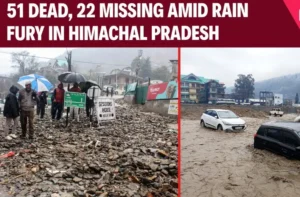US airstrikes on Yemen’s Ras Isa oil port have killed at least 30 people and wounded over 80, according to Houthi officials, in one of the deadliest incidents since the US ramped up its military campaign against the Iran-backed group. The strikes, which targeted the strategic fuel terminal in Yemen’s Hodeida governorate, sparked a massive explosion and fireball, with graphic footage showing bodies and debris scattered across the site.
US Military’s Rationale and Response
The US Central Command (CENTCOM) confirmed the strikes but did not acknowledge any casualties. In its statement, CENTCOM emphasized that the operation aimed to eliminate a vital source of fuel and revenue for the Houthis, which it claims has funded the group’s efforts to destabilize the region for over a decade. The US stressed that the strike was not intended to harm Yemeni civilians, but rather to weaken the Houthis’ operational capacity and economic base.
Houthi Perspective: Civilian Toll and Sovereignty
Houthi officials and their media outlets condemned the attack, describing it as a “flagrant violation of Yemen’s sovereignty” and a direct assault on the Yemeni people. They reported that the casualties included paramedics and civilian workers at the port, and accused the US of targeting a facility that has long served the country’s civilian needs. Houthi-run Al-Masirah TV broadcast harrowing images from the aftermath, fueling outrage both locally and internationally.
Casualty Discrepancies and Independent Reporting
Casualty figures have varied across sources, with Houthi media reporting between 30 and 38 killed, and over 80 to 102 wounded. Independent verification remains difficult, as US officials have not provided their own estimates and have not responded to queries regarding civilian casualties. International agencies and journalists have highlighted the challenge of confirming on-the-ground details amid ongoing hostilities.
Broader Context: Red Sea Shipping and Regional Tensions
The strikes come amid heightened tensions in the Red Sea, where the Houthis have targeted over 100 commercial vessels since November 2023, sinking two and killing four sailors. These attacks, which the Houthis claim are acts of solidarity with Palestinians in Gaza, have severely disrupted global shipping, with nearly 15% of world seaborne trade passing through the region. The US and its allies have tied their military response not only to maritime security but also to broader efforts to counter Iranian influence and prevent further escalation in the Middle East.
International and Regional Reactions
The international community remains divided. While the US and its partners justify the strikes as necessary to protect global shipping lanes and deter further Houthi aggression, humanitarian organizations and some governments have expressed concern over civilian casualties and the risk of deepening Yemen’s humanitarian crisis. The Houthis have vowed to escalate in response, threatening renewed missile and drone attacks on US and allied naval assets in the region.
Significance and Outlook
This latest strike underscores the growing complexity of the conflict, with the US intensifying its campaign against the Houthis under President Donald Trump’s administration. The escalation raises fears of broader regional instability, especially as the conflict in Gaza continues and Iran’s role remains under scrutiny. With both sides vowing not to back down, the Red Sea and surrounding areas are likely to remain flashpoints in the coming weeks.







